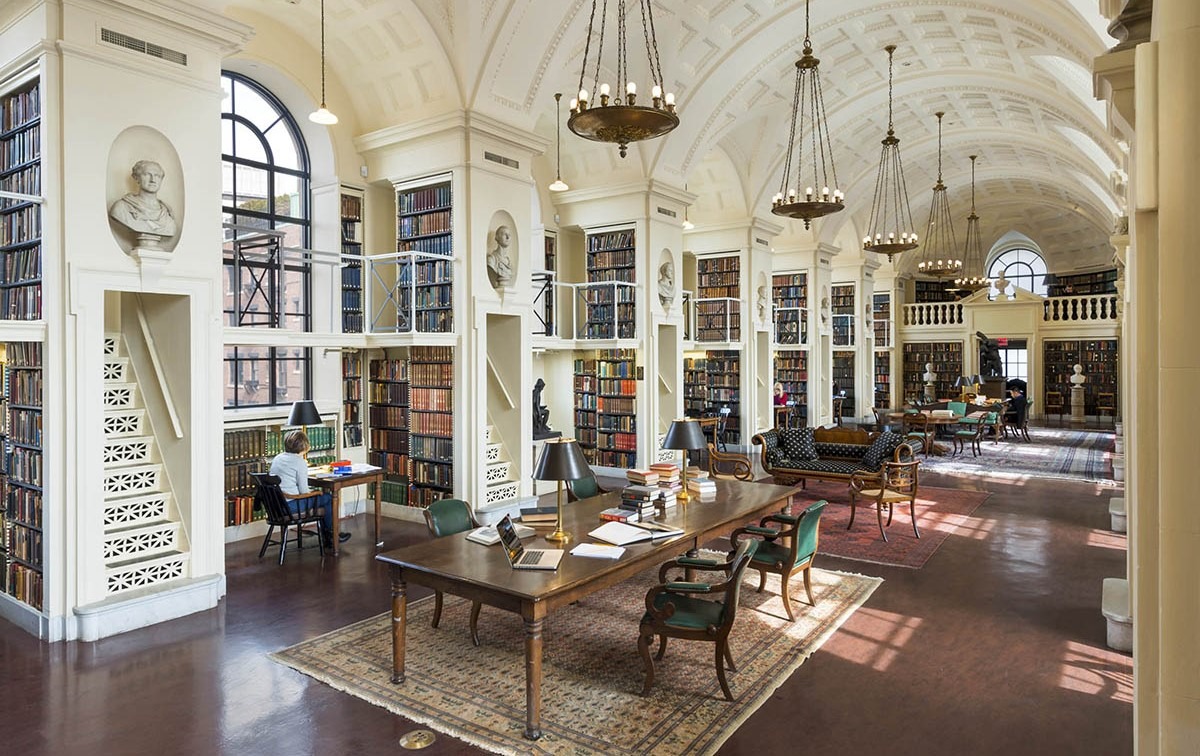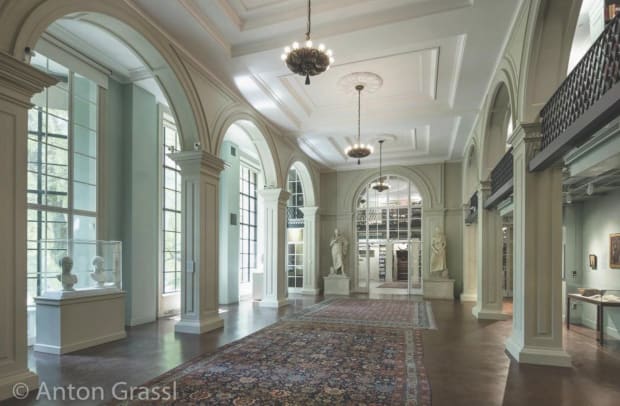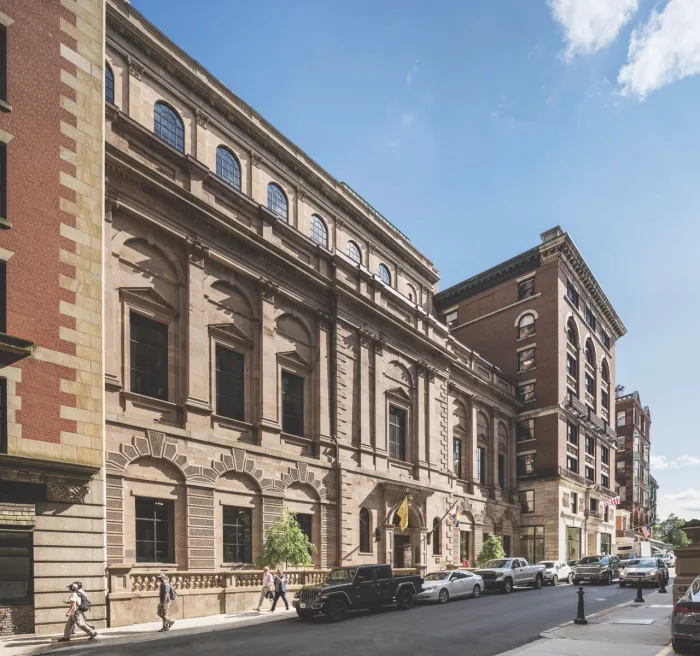The December issue of Traditional Building magazine features an article I wrote on the extensive renovation of the Boston Athenaeum by Annum Architects, formerly Ann Beha Architects. It was originally designed in 1847, with a renovation and addition in 1913-14. It’s been extensively reimagined to engage the community, inside and out, and A+A is pleased to publish this feature today:
One of the nation’s oldest libraries—and one of Boston’s finest mid-19th-century buildings—recently emerged from a 21st-century metamorphosis
The Boston Athenaeum was established in 1807 by a group of forward-looking merchants dedicated to reading materials, newspapers, and learning. It was not a private men’s club, though it was membership-driven.
“The founders and first shares were in men’s names, but they were really family memberships,” says Leah Rosovsky, director of the Athenaeum. “In 1822 the first woman owned a proprietorship in her name.” Over time, its members—educated through its library and personal interactions—were met with great success. “Its purpose was not to be social, but to increase people’s access to knowledge,” she says. Moreover, its members were civic-minded. The Boston Public Library and the Museum of Fine Arts evolved from Athenaeum members.
Construction for a new, permanent home began in 1847 at 10½ Beacon Street, with a building designed by Edward Clarke Cabot. The new Boston Athenaeum opened in 1849, with a sculpture gallery on the first floor, a book collection on the second, and a painting gallery on the skylit third. Fourth and fifth floors were added in 1913-1914 with a major renovation by Henry Forbes Bigelow.
More recently, its membership has been intent on pursuing a more inclusive membership, to create a place where people of diverse backgrounds can reach out, talk to one another, and enjoy new levels of programming. Toward that end, the Athenaeum acquired three floors of a neighboring building at 14 Beacon Street, opening two of them up for new life, and using a third for storing mechanical equipment.
The primary mission here of Boston-based Ann Beha Architects, now Annum Architects, was to create one new Athenaeum for its members, books, and art. They avoided adding separate spaces off to one side of the original, and instead initiated a seamless experience between the two buildings. “The new spaces blend with the old,” says Robert Carroll, the firm’s senior associate and project manager.
They created a new gallery, added flexible gathering spaces for revenue-generating events, and then a bistro to encourage dialog, idea-sharing, and connectivity between new and old members, as well as the general public.
The lobby received a much-needed overhaul, with a return to its original, awe-inspiring entry sequence. Over the years, it had been cluttered with ADA access in a closet, folding tables for book pick-up, along with coat racks and lockers. “It felt more like a mud room than a national landmark,” he says. “Now there’s natural light there, and the lockers and coat racks and children’s space are in the new building.”
That means visiting children can be part of the Athenaeum without disturbing anyone else. In their new space, they’re free to giggle, put on plays, and generally enjoy themselves on their own in an area off the main entry. “They don’t have to engage with the old space unless they want to,” Carroll says.
In 1849, the Athenaeum was staffed by five individuals. Today, that number is closer to 50 —with offices carved out of the library’s stack areas. So the architects created offices and suites in the new building, and brought the library stacks back to life on its upper level. One large space, the Long Room, has been updated with audiovisuals, new paint, and lighting.
They also created casual spaces for social interaction, with the art collection interspersed within them. They added the new gallery at the old building’s center, with more space and a functional layout for the Athenaeum’s exhibition program, then added other spaces where pieces from its collection can be displayed permanently .
The results foster cozy interactions between readers and artwork. “We were able to re-hang some of our original gallery areas for a museum experience that’s a warm and welcoming space to sit down and read for a while,” Rosovsky says.
The new building’s furnishing and material palette were inspired by the rich colors and textures of the original, but it’s no reproduction. “That was deliberate,” she says. “We didn’t want to feel like we were imitating it—we wanted to acknowledge that it’s a new space.”
Outside, the building’s all about engaging the community and life outside. There’s new backlit signage. The bistro’s front door is at 14A Beacon Street. Fortress-like windows, once barred, are now more inviting. An entry door with tiny portholes was replaced with a transparent one that opens with the wave of a hand. Beside that door, in June, a Pride flag hung opposite the Athenaeum’s own.
But the real measure of success for this members-only library, the one that also allows the public inside for a nominal fee, lies in its outreach. It hosts events like Martini Movie Nights, and was voted “Best in Boston” for private parties by Boston magazine.
“It’s an amazing venue,” Carroll says.
And that’s an understatement.
For more, go here.







